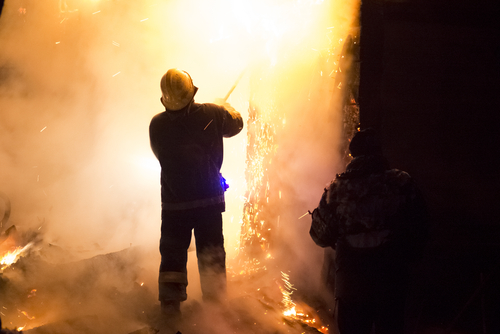Extinguishing fires in the best way possible has become standard practice in arresting the rampant destruction of property. Unfortunately, the chemicals used to put out blazes are often hazardous to the environment and are proven to be anything but green or sustainable. Guest writer Natasha Sabin addresses some of these concerns.

The issue
Fire safety and sustainability have only recently started being discussed together. And it’s no wonder; the lack of collaboration between the two industries has led to the development of two sets of products and procedures that have opposing interests.
Many fire safety products use chemicals that are harmful to the ozone layer. Likewise, many materials that are used to retain heat and increase the sustainability of buildings are highly flammable.
The matter is further complicated by the fact that there are few incentives that encourage businesses to be more conscious of fire safety. Instead, there are strict guidelines that make many view precautions as a necessary evil. On the other side of the spectrum, there are plenty of initiatives that encourage people to ‘go green’, not to mention the added benefits of reduced productivity costs and an improved company reputation.
It’s no wonder fire safety is being cast aside in favour of sustainability.
But is this fair on businesses?
Absolutely not.
One would assume that any sustainable products that are being recommended increase, rather than decrease fire safety. After all, there are few things as wasteful as a burning building. Damaged products and materials need to be disposed of and replaced. Water and harmful chemicals are used to extinguish the fire. Then there’s the excruciating amount of C02 emissions that are released.
Additionally, it’s not fair that fire safety products that businesses are forced to buy, should inhibit a company’s efforts to take environmentally friendly measures. Cement a product recommended as safe, for instance, releases 5% of all C02 emissions alone!
So what is the solution?
Overall, the two departments need to liaise more, and find solutions that reduce the risk of fire while promoting sustainability. More needs to be done to educate business owners about the products they are using, and the compromises they may be making.
In all fairness, there is currently some work being carried out to redefine ‘sustainability’ to include a mention of fire safety. And in November 2011, the NFPA released an interesting document that outlined some causes for concern in sustainable products that are being developed.
The sprinkler example
To end on an optimistic note, there is clearly a middle ground, and this can be seen by looking at the all-round benefits of sprinklers.
Each sprinkler discharges around 50 -100 litres of water per minute, compared to the 1,000 – 2,000 litres per minute of water that is likely to be used by the fire service. The reason for the dramatic increase is that the fire will worsen while you wait for the fire service to respond – sprinklers begin discharging water 10 – 30 seconds after enough heat is produced to operate them. Additionally, there is also the option to use reclaimed water in your sprinklers.
Sprinklers reduce the amount of damage that a fire can cause while reducing the quantity of water that’s used to extinguish the fire.
This is just one example, but it’s a great way of demonstrating how fire safety and sustainability can work in cohesion with each other.
Author Bio: Natasha Sabin is an avid blogger from Fire Safety Supplier, a specialist fire protection company.
Photo: Firefighters extinguishing fire in building from Shutterstock
[source: http://feeds.importantmedia.org/~r/IM-greenbuildingelements/~3/l3cby7tRWDw/]

Leave a Reply
You must be logged in to post a comment.